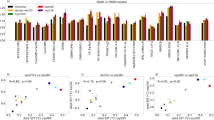Abstract
Even if they cannot readily recall its exact definition or its particular historical impacts, governments, media outlets, communities, and weather-sensitive economic sectors are for the most part aware of El Niño as a potential threat to society. The quasi-periodic oceanic extreme is no longer the unexplained phenomenon that it was as recently as the late 1960s, when it was first determined to be a tropical Pacific Ocean basin-wide event (Bjerknes 1969).
Since that time, El Niño has come to be commonly viewed as another expression of climate variability on a sub-decadal scale, much as is the flow of the seasons at the annual scale. As with seasonal flows, El Niño, though more irregular in its timing, provides close observers who have been forewarned about its aperiodic onset and likely impacts with a degree of forecast reliability. To be sure, El Niño today almost invariably appears in media headlines as a red flag in countries at risk of the hydrometeorological hazards each event is known to produce. At this point, social media is also abuzz with concern when an El Niño forms, especially with regard to its impacts.
El Niños always yield new social and physical scientific research findings that provide insights for policymakers. They also tend to expose societal strengths and weaknesses and afford lessons for decision makers on how better to prepare for and respond to future event forecasts, impacts, and recovery efforts. Additionally, being adequately prepared for the extremes of the El Niño Southern Oscillation (ENSO), which are marked by anomalously warm or cold sea surface temperatures (SSTs) in the tropical Pacific, will benefit societal coping capabilities within a warming global climate, especially in terms of the variability and extremes that are predicted to accompany an altered climate regime.
Access this chapter
Tax calculation will be finalised at checkout
Purchases are for personal use only
Similar content being viewed by others
References
Beddington J (2012) Foresight reducing risks of future disasters: priorities for decision makers (2012) Final project [Beddington] Report. The Government Office for Science, London
Bjerknes J (1969) Atmospheric teleconnections from the equatorial pacific. Mon Weather Rev 97(3):163–172. https://journals.ametsoc.org/view/journals/mwre/97/3/1520-0493_1969_097_0163_atftep_2_3_co_2.xml
Cai W, Borlace S, Lengaigne M et al (2014) Increasing frequency of extreme El Niño events due to greenhouse warming. Nat Clim Change 4:111–116. https://doi.org/10.1038/nclimate2100
Cane MA, Zebiak SE, Dolan SC (1986) Experimental forecasts of El Niño. Nature 321:827–832
Cho, E. 2016. “El Niño and Global Warming—What’s the Connection?” State of the Planet (Columbia University: Earth Institute) February 2. https://blogs.ei.columbia.edu/2016/02/02/el-Niño-and-global-warming-whats-the-connection/
FEWSNET (Famine Early Warning Systems Network) (ND) El Niño and Precipitation. FEWSNET. https://fews.net/sectors-topics/sectors/agroclimatology/el-ni percentC3 percentB1o-and-precipitation
Glantz M (1994) Forecasting El Niño: Science's gift to the 21st century. Ecodecision
Glantz MH (2002) El Niño Hotspots, Fragilecologies. December 5. https://www.fragilecologies.com/archive/dec05_02.html
Glantz MH (2011) Private communication with Leslie Malone, WMO. Geneva. Adapted by Ross, R. 2018
Glantz MH, Naranjo L, Baudoin M-A, Ramírez IJ (2018) What Does It Mean to Be El Niño Ready? Atmosphere 9, #3
Glantz MH, Ramirez IJ (2020) Reviewing the Oceanic Niño Index (ONI) to Enhance Societal Readiness for El Niño’s Impacts. Int J Disaster Risk Sci 11:394–403
Glantz MH, Pierce G (2020) El Niño Frequently Asked Questions (FAQs). CCB-Boulder. https://www.ccb-boulder.org/el-nino-frequently-asked-questions-faqs/
Idlehearts.com. https://www.idlehearts.com/authors/rene-dubos-quotes. (Website). Accessed 10 Oct 2020
IPCC (2012) Summary for policymakers. In: Field CB, Barros V et al (eds) Managing the risks of extreme events and disasters to advance climate change adaptation. A special report of working groups I and II of the intergovernmental panel on climate change. Cambridge University Press, Cambridge, UK, New York, NY, USA, pp 1–19
L'Heureux M (2014) ENSO Flavor of the Month. ENSO Blog https://www.climate.gov/news-features/blogs/enso/enso-flavor-month. Accessed 28 Nov 2020
Magrath J (2015) Entering uncharted waters: El Niño and the threat to food security. OXFAM. https://www.oxfam.org/en/research/entering-uncharted-waters-el-Niño-and-threat-food-security
Mathworks.com. What Is Fuzzy Logic? Available online: https://www.mathworks.com/help/fuzzy/what- is-fuzzy-logic.html?requestedDomain=www.mathworks.com. Accessed 10 Oct 2020
Munich Re (2016) A Strong El Niño. (March 2). https://www.munichre.com/topics-online/en/climate-change-and-natural-disasters/natural-disasters/year-with-strong-el-Niño-2015.html
Naranjo L, Glantz MH, Temirbekov S, Ramirez IJ (2018) El Niño and the Köppen-Geiger classification: a prototype concept and methodology for mapping impacts in central America and the circum-caribbean. Int J Disaster Risk Sci 9:224–236. https://doi.org/10.1007/s13753-018-0176-7
Novikov V (2005) Climate impacts of El Niño Phenomenon in Latin America and the Caribbean. GRID-Arendal. https://www.grida.no/resources/6517. Accessed 25 Nov 2020
Null J (2020) El Niño and La Niña Years and Intensities: Based on Oceanic Niño Index (ONI). GGWeather. https://ggweather.com/enso/oni.htm
Poynter R (2015) Marketing and social communications lesson 1: what is market research and why do organizations use it? SlideShare (Slide 31). https://www.slideshare.net/RayPoynter/poynter-lesson-1
RallyPoint (2016) Which is more important, strategic leadership or tactical leadership? Rallypoint. https://www.rallypoint.com/answers/which-is-more-important-strategic-leadership-or-tactical-leadership
Robjhon M, Thiaw WM (2014) The 2014 Primera drought over Central America. FEWS Net/NOAA. https://www.cpc.ncep.noaa.gov/products/outreach/CDPW40/Primera201420151022MR.pdf
Ropelewski CF, Halpert MS (1987) Global and regional scale precipitation patterns associated with the El Niño southern oscillation. Mon Weather Rev 115(8):1606–1626. https://www.oc.nps.edu/webmodules/ENSO/images/noaa_warm.gif
TutorialsPoint (2014) Artificial intelligence—fuzzy logic systems. TutorialsPoint. https://www.tutorialspoint.com/artificialintelligence/artificialintelligencefuzzylogicsystems.htm. Accessed 10 Oct 2020
Vondruska J (1981) Postwar production, consumption, and prices of fish meal. In: Glantz MH, Thompson D (eds) Resource management and environmental uncertainty: Lessons from coastal upwelling fisheries. Wiley, New York
WFP (World Food Program) (2017) El Niño 2015: The Story So Far and What To Expect Next. WFP. https://docs.wfp.org/api/documents/WFP-0000037744/download/. Accessed 25 Nov 2020
WFP (2016) 2015–2016 El Niño: WFP and FAO. Reliefweb.com. https://reliefweb.int/sites/reliefweb.int/files/resources/WFP%20%20FAO%20El%20Ni%C3%B1o%20Overview%20by%20FSC.pdf. Accessed 25 Nov 2020
Author information
Authors and Affiliations
Editor information
Editors and Affiliations
Rights and permissions
Copyright information
© 2022 The Author(s), under exclusive license to Springer Nature Switzerland AG
About this chapter
Cite this chapter
Glantz, M.H. (2022). Introduction. In: Glantz, M.H. (eds) El Niño Ready Nations and Disaster Risk Reduction. Disaster Studies and Management. Springer, Cham. https://doi.org/10.1007/978-3-030-86503-0_1
Download citation
DOI: https://doi.org/10.1007/978-3-030-86503-0_1
Published:
Publisher Name: Springer, Cham
Print ISBN: 978-3-030-86502-3
Online ISBN: 978-3-030-86503-0
eBook Packages: Biomedical and Life SciencesBiomedical and Life Sciences (R0)




